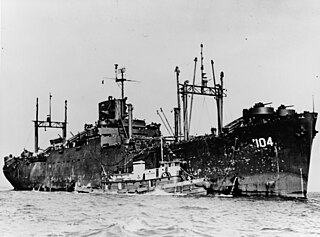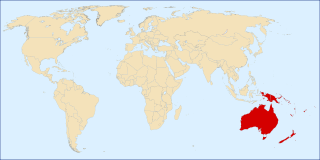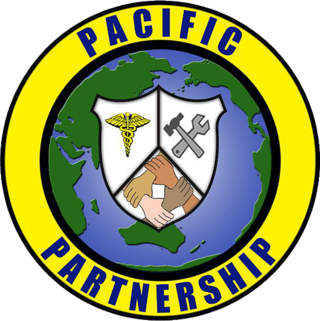
The history of Oceania includes the history of Australia, Easter Island, Fiji, Hawaii, New Zealand, Papua New Guinea, Western New Guinea and other Pacific island nations.

Micronesia is a subregion of Oceania, consisting of approximately 2,000 small islands in the Northwestern Pacific Ocean. It has a close shared cultural history with three other island regions: Maritime Southeast Asia to the west, Polynesia to the east, and Melanesia to the south—as well as with the wider community of Austronesian peoples.

Oceania is a geographical region including Australasia, Melanesia, Micronesia, and Polynesia. Outside of the English-speaking world, Oceania is generally considered a continent, while Mainland Australia is regarded as its continental landmass. Spanning the Eastern and Western hemispheres, at the centre of the water hemisphere, Oceania is estimated to have a land area of about 9,000,000 square kilometres (3,500,000 sq mi) and a population of around 46.3 million as of 2024. Oceania is the smallest continent in land area and the second-least populated after Antarctica.

Pacific Islanders, Pasifika, Pasefika, Pacificans, or rarely Pacificers are the peoples of the Pacific Islands. As an ethnic/racial term, it is used to describe the original peoples—inhabitants and diasporas—of any of the three major subregions of Oceania or any other island located in the Pacific Ocean.

This is a list of hospitals in Oceania for each sovereign state, associated states of New Zealand, and dependencies, and territories. Links to lists of hospitals in countries are used when there are more than a few hospitals in the country. Oceania has an area of 8,525,989 km2 and population of 46,345,760 (2024). The World Health Organization surveys of healthcare in smaller countries are used to identify hospitals in smaller countries.

European exploration and settlement of Oceania began in the 16th century, starting with the Spanish (Castilian) landings and shipwrecks in the Mariana Islands, east of the Philippines. This was followed by the Portuguese landing and settling temporarily in some of the Caroline Islands and Papua New Guinea. Several Spanish landings in the Caroline Islands and New Guinea came after. Subsequent rivalry between European colonial powers, trade opportunities and Christian missions drove further European exploration and eventual settlement. After the 17th century Dutch landings in New Zealand and Australia, with no settlement in these lands, the British became the dominant colonial power in the region, establishing settler colonies in what would become Australia and New Zealand, both of which now have majority European-descended populations. States including New Caledonia (Caldoche), Hawaii, French Polynesia, and Norfolk Island also have considerable European populations. Europeans remain a primary ethnic group in much of Oceania, both numerically and economically.

The Indigenous peoples of Oceania are Aboriginal Australians, Papuans, and Austronesians. These indigenous peoples have a historical continuity with pre-colonial societies that developed on their territories. With the notable exceptions of Australia, New Zealand, Hawaii, New Caledonia, Guam, and Northern Mariana Islands, indigenous peoples make up the majority of the populations of Oceania.

The Solomon Islands campaign was a major campaign of the Pacific War of World War II. The campaign began with Japanese landings and capture of several areas in the British Solomon Islands and Bougainville, in the Territory of New Guinea, during the first six months of 1942. The Japanese occupied these locations and began the construction of several naval and air bases with the goals of protecting the flank of the Japanese offensive in New Guinea, establishing a security barrier for the major Japanese base at Rabaul on New Britain, and providing bases for interdicting supply lines between the Allied powers of the United States and Australia and New Zealand.

The USS Alnitah (AK-127) was a Crater-class cargo ship in the service of the US Navy in World War II. Named a spelling variation of the star Alnitak in the constellation Orion, it was the only ship of the Navy to bear this name.
USS Alderamin (AK-116) was a Crater-class cargo ship commissioned by the U.S. Navy for service in World War II, named after Alderamin, the alpha star in constellation Cepheus. She was responsible for delivering troops, goods and equipment to locations in the war zone.
Koreans in Micronesia used to form a significant population before World War II, when most of the region was ruled as the South Seas Mandate of the Empire of Japan; for example, they formed 7.3% of the population of Palau in 1943. However, after the area came under the control of the United States as the Trust Territory of the Pacific Islands, most Koreans returned to their homeland. As of 2013, about seven thousand South Korean expatriates & immigrants and Korean Americans reside in the Marianas, which have remained under U.S. control, while only around two hundred South Korean expatriates reside in the independent countries of Micronesia.

USS President Monroe (AP-104) was a President Jackson-class attack transport. that served with the US Navy during World War II. She was named after Founding Father and the fifth U.S. president, James Monroe.

The following outline is provided as an overview and topical guide to Oceania.

USS President Adams (AP-38/APA-19) was a President Jackson-class attack transport of the United States Navy, named for Founding Father John Adams and his son, John Quincy Adams, the second and sixth Presidents of the United States.
The Oceania Table Tennis Federation (OTTF) is a table tennis organization founded on 1 June 1977, recognized by International Table Tennis Federation (ITTF) as its continental federation in Oceania. Discussions began at the Commonwealth Table Tennis Championships held in Melbourne, 1975. Seven foundation members were New Zealand, Australia, Guam, Papua New Guinea, Fiji, New Caledonia and Tahiti.

Pacific Partnership is an annual deployment of forces from the Pacific Fleet of the United States Navy (USN), in cooperation with regional governments and military forces, along with humanitarian and non-government organizations.

Oceanian culture encompasses the collective and diverse customs and traditions of art, architecture, music, literature, lifestyle, philosophy, politics and religion that have been practiced and maintained by the many ethnic groups of the geographical region of Oceania since prehistory. Cultures of Oceania reflect not only that of the region's indigenous peoples, but also the cultures brought by European colonisation and the United States, particularly through mass culture such as cinema and TV. Oceania is commonly divided into four geographic sub-regions, characterized by shared cultural, religious, linguistic, and ethnic traits: Australasia, Melanesia, Micronesia, and Polynesia. Most Oceanian countries are multi-party representative parliamentary democracies, and tourism is a large source of income for the Pacific Islands nations.
















